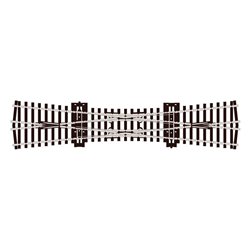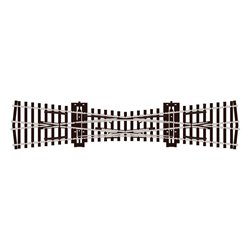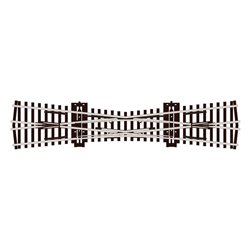The question: What is the difference between a 45xx Class and a Class 45? should really be: What isn't the...
No products
Product successfully added to your shopping cart
There are 0 items in your cart. There is 1 item in your cart.
Search Tips
What is a railway crossover?
A crossover is a railway track formation that allows a train to cross from one line to another.
Crossovers are constructed from two turnouts (points) to facilitate a train movement from one track to another. A typical arrangement would be to have two parallel tracks with turnouts facing in opposite directions, the diverging arm of each turnout will connect with the diverging arm of the other resulting in a train being routed off one track and joining the other.
Crossovers can be either facing or trailing. This means that on a facing crossover a train can approach, cross over and continue its journey in one fluid and continuous movement because the turnout diverges in the same direction as the train's direction of travel. A trailing crossover means that the turnouts will be merging onto the track from the wrong direction, so to use it a train must travel past the crossover and then reverse.
On real railways, before a suitable locking system was introduced to keep point blades in place, facing points were not considered to be safe on the main-line and were only used where absolutely necessary.
Click here to receive the tips weekly in your mailbox. You can unsubscribe at any time.










